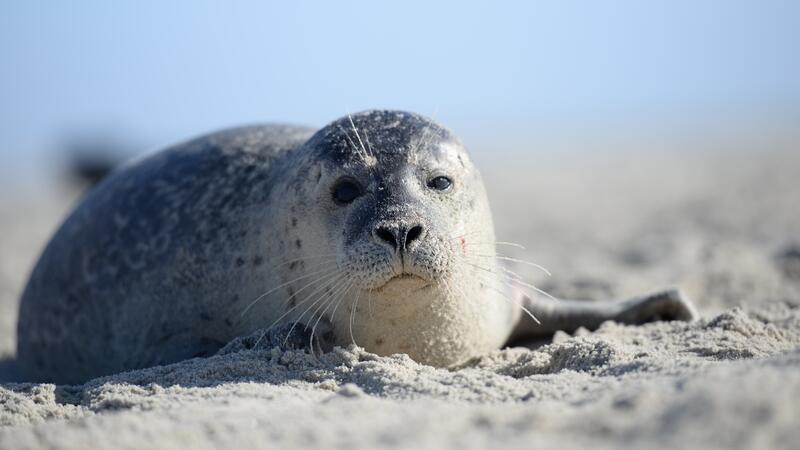Seal counts 2016: harbour seal population may have reached carrying capacity

The population of harbour seals in the Wadden Sea area remained largely stable in 2016. Experts assume that a slight decrease in numbers may be a signal that the overall population in the area has reached its carrying capacity. Another cause could be altered age and gender structures due to the effect of influenza A in 2014-2015. These are the results of this year’s aerial surveys for harbour seal counts. The surveys are coordinated annually by the Trilateral Sea Expert Group (TSEG) and cover the entire Wadden Sea World Heritage site stretching from Denmark via Germany to the Netherlands.
“We have good reason to believe that the current stagnation and last year’s slower growth are a result of natural fluctuation, as the harbour seal population has grown constantly since the massive epizootic of 2002 and the carrying capacity may be reached”, says Lasse Fast Jensen, Chair of the TSEG. Traditionally the seal counts are conducted during the moulting period in August, when many animals rest on haul out sites on sand banks and beaches. During the moult in August 2016, Denmark recorded 2,150 harbour seals, Schleswig-Holstein counted 6,592 and 8,160 were seen in the Netherlands. Due to unfavourable weather conditions the expert teams of Lower Saxony and Hamburg were unable to conduct their count during the moult. However, during pupping, adults were counted providing for a maximum count of 7,437 animals this year, which the experts used as indicative. The development of the harbour seal population varies between the regions: While there was a significant decrease in Denmark (-25%) and Schleswig-Holstein (-21%) in comparison to the previous year, the indicated population in Lower Saxony and Hamburg remained constant and a slight increase of 6% was detected in the Netherlands. The results from the other areas seem to follow last year’s trend: in 2015, counts in Denmark had decreased by 25% and in Schleswig-Holstein 10%. In the Netherlands, the numbers increased by 8% in 2016.
The trend is also seen in numbers of pups: In June 2016, 7,566 newborn pups were counted in the Wadden Sea – 11% less than in 2015, in which the highest number of pups since 1975 was recorded. “The stagnating numbers of pups may be another sign of the natural fluctuation of a healthy population, but may also be caused by influenza A, which affected numerous seals in 2014-2015. This may have altered age and gender structures”, explains Jensen: “In order to investigate the possible causes, we will continue to closely monitor the harbour seals of the Wadden Sea.”
“The seal populations are a true indicator for the success of the trilateral cooperation for the protection of the Wadden Sea”, says Rüdiger Strempel, Executive Secretary of the Common Wadden Sea Secretariat (CWSS) in Wilhelmshaven, Germany: “In the course of the last ten years the number of harbour seals in the Wadden Sea has doubled. Now we have to ensure that the population remains stable and a favourable conservation status is safeguarded.”
Harbour seals are one of the most iconic of 10,000 species that can be found in the Wadden Sea and one of the many reasons why the site was listed as World Heritage in 2009. Aerial counts of harbour seals have been conducted annually in the Danish, Dutch and German Wadden Sea area since 1975. The Trilateral Seal Expert Group (TSEG) is part of the Trilateral Wadden Sea Cooperation. The TSEG coordinates the counts and harmonizes the data from across the Wadden Sea region. Harbour seals in the Wadden Sea are specially protected and continually monitored under the Agreement on the Conservation of Seals in the Wadden Sea (WSSA) concluded under the auspices of the UN Convention on the Conservation of Migratory Species of Wild Animals (CMS). WSSA was the first daughter agreement concluded under CMS. CWSS acts as the secretariat of WSSA.
